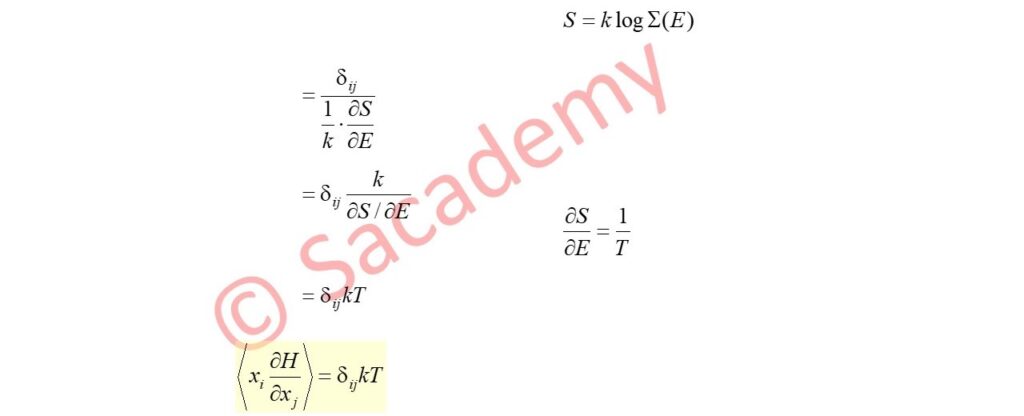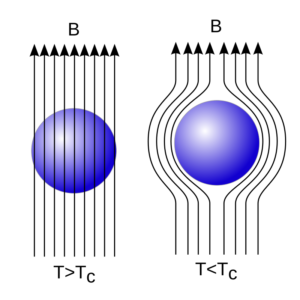Equipartition theorem
- Let xi be any coordinate or momenta i.e., xi = qi or pi (i = 1, 2, 3, …)
- If H represents the Hamiltonian, then ensemble average of xi (∂H/∂xi)





- This is known as generalized equipartition theorem.
Special cases
- If i = j and xi = pi, then δij = 1
- If i = j and xi = qi, then
- From canonical equation of motion
- Since in classical mechanics the sum of ith coordinate × ith component of the geometrical force i.e., Σ qi ṗi is known as the virial
- So above equation is known as Virial theorem.
- In many physical system, Hamiltonian
H = Σ AiPi2 + Σ BiQi2
- Here Pi and Qi are two canonically conjugate variables
- Here Ai and Bi are constants.

Here Ai and Bi are constants.
- Sine Pi and Qi are canonically conjugate quantities so we can not take them simultaneously.

- If there are f degrees of freedom, then
< H > = ½ f kT
- Thus each harmonic term in the Hamiltonian contributes ½ kT to the average energy.
- This is known as theorem of equipartition energy.
Statement
- The average energy associated with single variable, coordinate or momentum, which contributes a quadratic term (or square term) to the total energy is ½ kT per molecule in every case.
- Internal energy
U = < H > = ½ f kT
Cv = ∂U / ∂T = ½ f k
∴ Cv / k = ½ f
or Cv / k ∝ f
- It means Heat capacity ∝ Degrees of freedom of the system.
- To know in detail about equipartition theorem click on the link for English and click on the link for Hindi
Our other websites
https://vacancy.sacademy.co.in
Our YouTube channels


